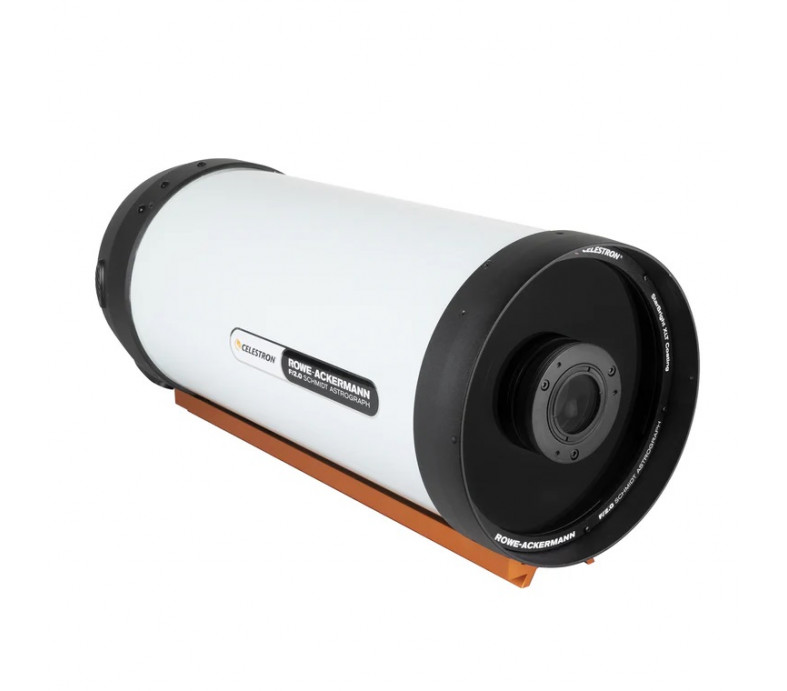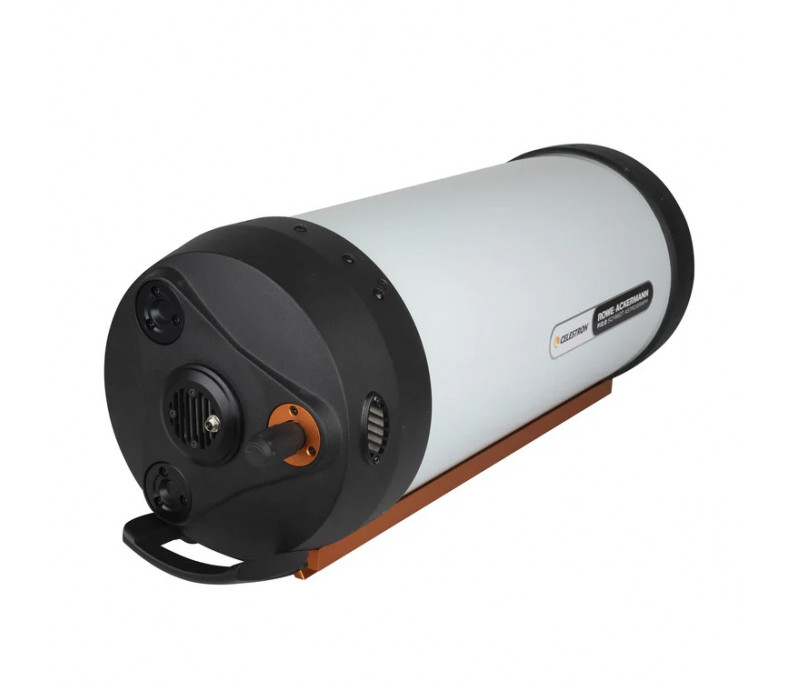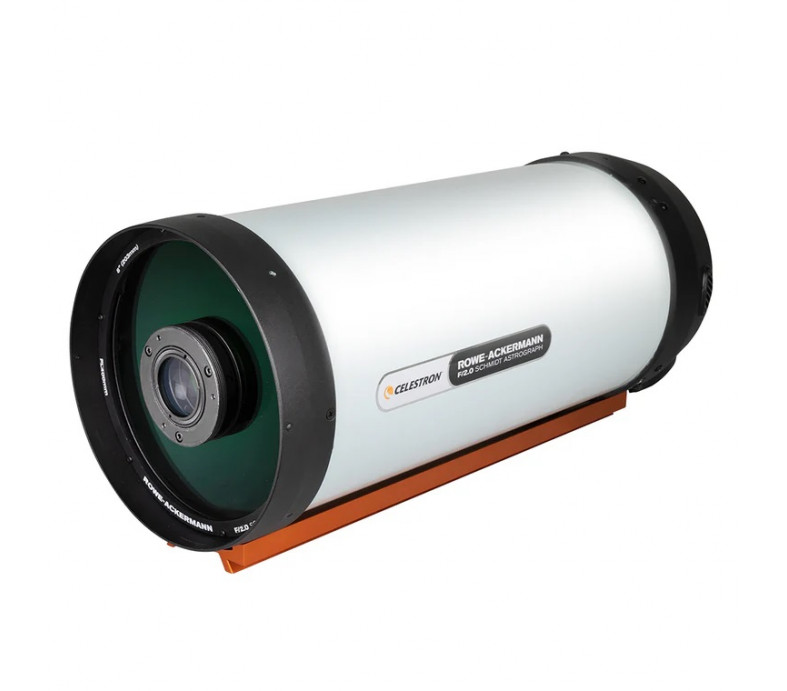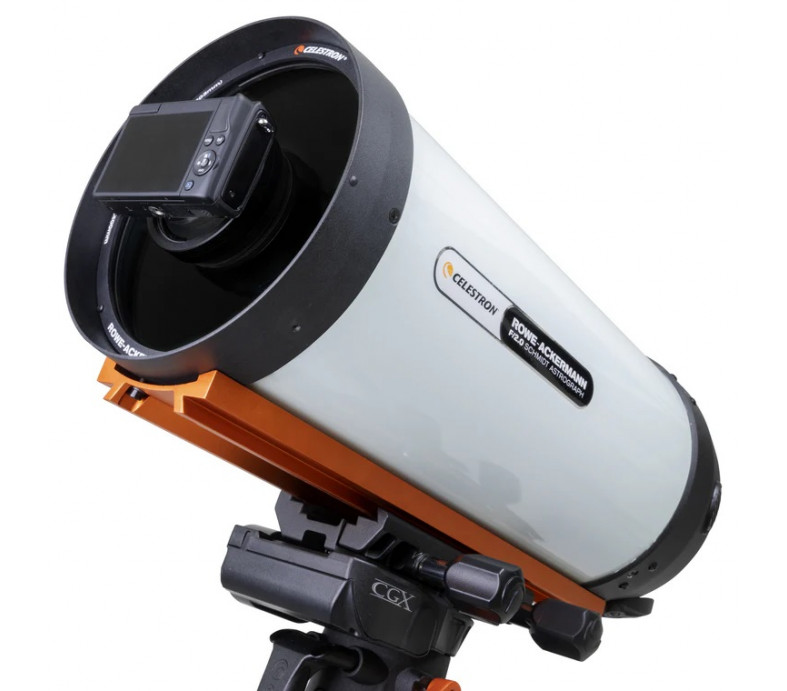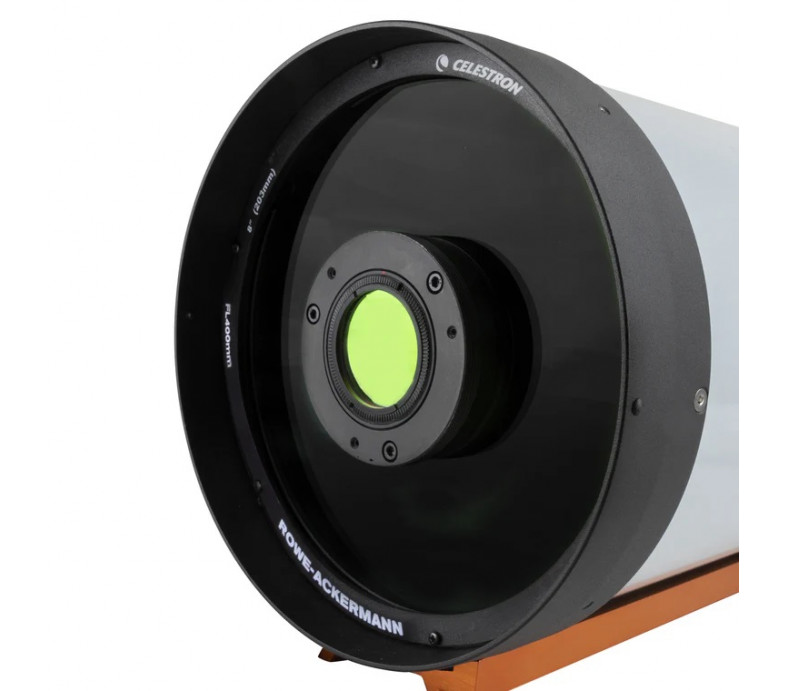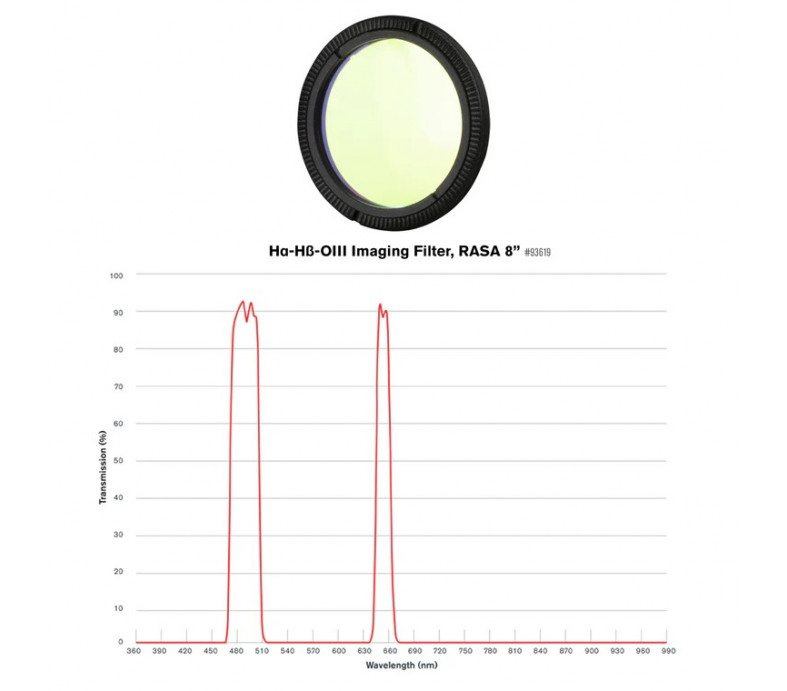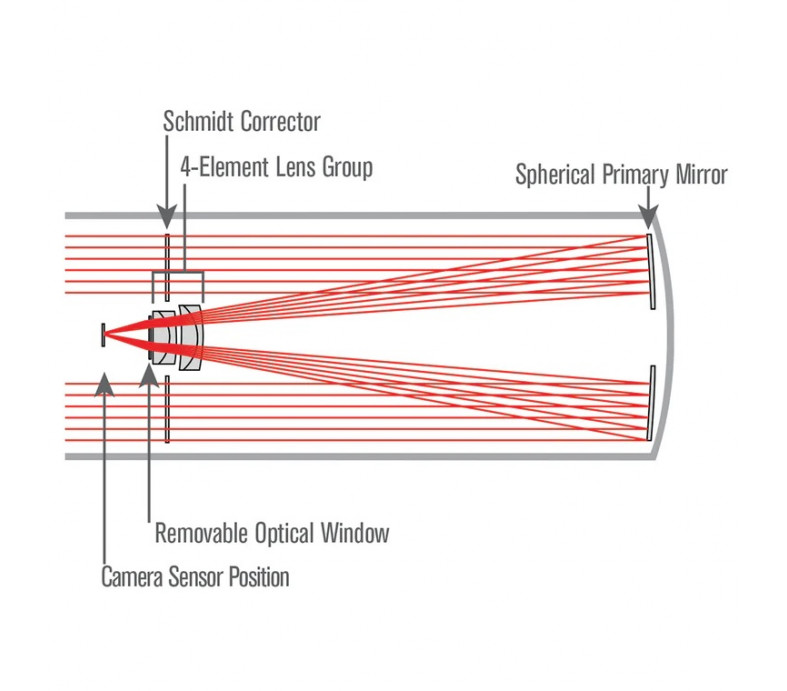Products
8" RASA Imaging Kit - Includes Ha Hb Oiii and Light Pollution Filter
- $3,995.00
- A Winning Astrophotography Kit – Combine the legendary 8" Rowe-Ackermann Schmidt Astrograph with two must-have filters—the Light Pollution Reduction Filter and the Hα-Hβ-OIII Filter—for a blazing-fast f/2.0 system that can produce stunning images of a wide array of astroimaging targets.
- Ultra-fast Rowe-Ackermann Schmidt f/2.0 Optics – Don't spend hours capturing your images—with RASA 8's f/2.0 optical system, you can gather the same image brightness 25 times faster than an f/10 system. And RASA 8 images aren't just bright and full of detail; they're also free from optical defects like field curvature, coma, astigmatism, and chromatic aberration.
- Patented Technology that Researchers Trust – Beyond imaging, RASA is the perfect tool for detecting errant space junk and asteroids. Scientists and government agencies use RASA arrays to monitor the space environment and protect our satellites.
- Built for Today's Cameras – Designed with color astronomical CMOS cameras, smaller CCD cameras, and mirrorless cameras in mind, RASA 8's flat field provides pinpoint stars and excellent performance across an entire APS-C sensor.
- Ultra-Stable Focus System – A precision linear ball bearing virtually eliminates image shift. RASA performs over a wider spectral range than most telescopes, from 400 nm to 800 nm, so more of the light passing through the astrograph is in sharp focus.
- Includes Two RASA Imaging Filters – When you purchase this kit, your RASA is ready to handle a variety of imaging targets and observing conditions right out of the box. The Light Pollution Reduction Filter and Hα-Hβ-OIII Filter enhance your images of faint targets like nebulae by blocking light pollution, improving image contrast, and darkening the sky background. Celestron engineers designed each filter to fit seamlessly into RASA 8's optical path.
Enquire for more information or email us specifics at sales@astro.com.sg.
Armed with the RASA 8 Imaging Kit, you can create stunning, deep-sky astroimages in minutes and seconds—not hours or days!—even from a light-polluted backyard. Discover the fun and excitement of astroimaging the easy way with the acclaimed Rowe-Ackermann Schmidt Astrograph (RASA) telescope and two indispensable imaging filters: the Light Pollution Filter and Hα-Hβ-OIII Filter. Whether you're new to imaging or a seasoned pro, you'll enjoy unparalleled convenience and stunning results—even when photographing the most elusive deep-sky targets.
RASA: Imaging at f/2.0
At Celestron, we love astroimaging. But we're well aware of the challenges our favorite hobby can sometimes involve: trekking long distances to dark skies, precisely aligning and guiding an equatorial mount, and capturing hours of very long exposures to gather enough photons to see the spiral arms and faint details of our favorite celestial objects. In a quest to solve all those challenges, our engineers joined forces with storied optical designers Dave Rowe and Mark Ackermann to create RASA.
While a traditional SCT telescope places the imaging sensor at the Cassegrain focus at the rear of the telescope, RASA places the sensor at the prime focus at the front of the telescope. Instead of imaging at f/10 like you do with an 8" Schmidt-Cassegrain (SCT), RASA works at lightning speed, f/2—25 times faster! In 10 minutes with RASA, your image is as bright as it would be in 4+ hours with an SCT (albeit with a wider field of view).
When you image with a RASA 8, you can use much shorter exposure times. Add a sensitive camera and the proper "live stacking" software, and the 8" RASA can provide an almost real-time "observing" experience—even from the city. View images on a computer in seconds that are brighter and more detailed than you'd see through a much bigger telescope with the naked eye. Or capture and stack lots of short exposures and process the data; you'll be stunned at the details you can bring out.
What's more, RASA's speed lessens the tracking demands on your mount. You’ll be using shorter sub-exposures so you won't need to track accurately over extended periods. In many cases, you won't even need to use an autoguider. And since RASA 8 weighs just 17 lb, it pairs perfectly with a wide variety of mounts, including the grab-and-go Advanced VX.
Although RASA has revolutionized the world of astroimaging, its influence goes far beyond astroimaging. Researchers and government agencies around the world have discovered that RASA is the ideal tool for detecting errant space junk and asteroids. Arrays of RASAs are deployed worldwide, scanning the skies and protecting our satellites in orbit.
Flat-field Performance Perfectly Paired with Today's Cameras
The 8" RASA delivers a flat field without optical aberrations for razor-sharp stars across a wide field of view. It can capture detailed deep-sky astronomical images at a fraction of the cost of other slower and smaller telescope designs, like refractors.
The RASA 8" has many of the same thoughtfully designed features as its "big brother" RASA 11, including the integrated air-cooling system, internal filter mount, and sturdy CGE dovetail mounting bar. Purely designed for imaging, the 8" RASA cannot be used visually. The focal plane is located at the front of the optical system, so it cannot accommodate a traditional eyepiece.
Unlike the 11" and 14" RASA, which both work with DSLR and large astronomical cameras, we designed the 8" model with color astronomical CMOS cameras, smaller CCD cameras, and mirrorless cameras in mind. (RASA 8 does not work with standard DSLR cameras.) It is optimized for sensors with up to a 22mm diagonal but performs well with sensors up to a 32mm diagonal. The APS-C sized sensors used in many mirrorless cameras are a good choice. Note that 42mm full-frame sensors can also work, but performance diminishes at the edges of the sensor, and field illumination is reduced. We don't recommend pairing RASA 8 with any camera body more than 4" in diameter. See the chart below to determine if your camera is compatible with RASA 8.
Ultra-Stable Focus System
With the launch of the 8" RASA, Celestron unveiled a new focuser design that mitigates lateral movement of the primary mirror when focusing, slewing, or tracking with the astrograph. Precise focusing is easier and more stable than ever. The key to the Ultra-Stable Focus System is a precision linear ball bearing, which we individually test during assembly to ensure optimal results.
Includes Two Must-have RASA 8" Imaging Filters
Along with the RASA 8" optical tube, this kit also includes the H-alpha H-beta OIII Imaging Filter and the Light Pollution Imaging Filter. This kit maximizes your RASA 8" telescope's potential to capture stunning images under any sky conditions, ensuring precise targeting of specific celestial objects and optimal light transmission.
Light Pollution Imaging Filter - This broadband filter effectively blocks specific wavelengths of artificial light while allowing the desired wavelengths of light emitted by celestial objects to pass through. When you add this filter to your RASA, you'll see vibrant, detailed celestial objects that "pop" against a dark sky background with excellent overall contrast. This filter blocks light from some of the most common sources of artificial and natural light pollution between 400 and 700 nm (i.e., the visible spectrum), including high- and low-pressure sodium-vapor streetlights, mercury-vapor streetlights, and natural airglow caused by oxygen in the atmosphere.
Unlike some light pollution filters, Celestron's filter blocks only specific areas of the spectrum instead of wide regions. This helps to maintain image brightness and color balance. In addition, particular wavelengths associated with emission nebulae, such as H-α (656nm), H-β (486nm), OIII (496nm and 501nm), and SII (672nm), are highly transmitted, ensuring minimal loss of image brightness for those objects.

H-alpha H-beta OIII (Hα-Hβ-OIII) Imaging Filter – The specialized Hα-Hβ-OIII Imaging Filter, also known as the Nebula Filter, is a narrowband filter that allows very high transmission of select wavelengths of light from emission nebulae while blocking the rest of the spectrum. You'll immediately notice much higher contrast in your images, even from your light-polluted backyard! And since the transmission at the critical wavelengths is so high, the nebulae are not dimmed—only the background is made blacker.
The Hα-Hβ-OIII Imaging Filter is perfect for imaging emission nebulae like the North America Nebula (NGC 7000), Lagoon Nebula (M8), Orion Nebula (M42), and the Carina Nebula (NGC 3372). The transmission spectrum for the Hα-Hβ-OIII Imaging Filter is 85% or greater at key wavelengths (486nm, 496nm/501nm, 656nm) and less than 0.5% transmission elsewhere. And while other nebula filters can't keep up with RASA's fast optics and end up blocking some of the the wrong wavelengths, this filter is engineered to pair perfectly with this ultra-fast f/2 system.
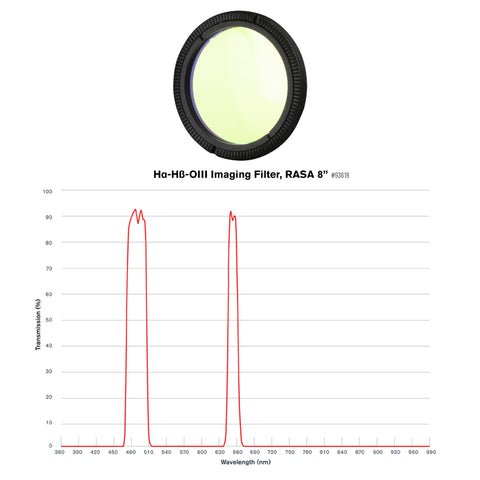
Both the Light Pollution Filter and the Hα-Hβ-OIII Imaging Filter are custom-engineered to work with RASA 8, so they won't block any of the "good" wavelengths, specifically targeting light pollution and other undesired wavelengths. The filters fit directly into the internal filter mount in RASA 8's front lens cell, where the optical window normally mounts. To use a filter, you first remove and replace the clear window with the desired filter. Since you are not introducing new layers of glass into the system when you swap out the window with the filter, you maintain RASA's exacting performance.
Each filter has a plastic storage case to safely store the filter or the optical window that came with your RASA when not in use. You will also receive a spectral transmission graph unique to each individual filter, verifying its performance.
Unique Optical Design
RASA’s optical design is patented (US 2016/0299331 A1). The design consists of a Schmidt corrector, primary mirror, lens group, and optical window. The lens group contains 4 elements and utilizes rare-earth elements. Unlike many telescopes that only perform well over the visible spectrum (400-700nm), the 8” RASA’s optics are designed to perform over a wider spectral range, from 400nm – 800nm. This allows more of the light emitted from the astronomical object to be sharply focused in the image.
With many imaging systems, adding an extra piece of flat glass such as a filter does not change optical performance. However, that is not the case with super-fast optical systems like the RASA. Our engineers addressed this by designing the RASA with a removeable optical window, so you can maintain peak optical performance if a filter is added or if a camera has its own optical window. Celestron offers a Light Pollution Imaging Filter designed specifically for the 8” RASA, which mounts in place of the optical window.
All refractive optical surfaces are coated with StarBright XLT coatings, while the primary mirror uses enhanced aluminum coatings. This maintains high light transmission through the entire optical system.
When compared with “Hyperstar SCT” systems, the RASA 8 provides better optical performance and field illumination.
| Optical Tube Info: | |
|---|---|
| Optical Design: | Rowe-Ackermann Schmidt Astrograph |
| Aperture: | 203mm (8") |
| Focal Length: | 400mm (15.74") |
| Focal Ratio: | f/2.0 |
| Central obstruction diameter: | 93mm (3.66") (46% of aperture diameter) |
| Light Gathering Power (Compared to human eye): | 843x |
| Resolution (Rayleigh): | 0.68 arc seconds |
| Resolution (Dawes): | 0.57 arc seconds |
| Image Circle: | 22mm (.86") Ø, 3.15° |
| Useable field: | 32mm (1.26") Ø, 4.6°, only minimal performance loss at edge of FOV |
| Wavelength range: | 400 - 800 nm |
| Spot size: | < 2.3 μm RMS across image circle |
| Optical Coatings: | StarBright XLT |
| Off-axis Illumination: | 93% at 11mm (.43") off-axis |
| Optical Window: | 46mm (1.81") Ø |
| Back focus with included camera adapter: | 25mm (.98") |
| Back focus from top of threaded collar: | 29mm (1.14") |
| Optical Tube: | Aluminum |
| Optical Tube Length: | 628mm (24.7") |
| Optical Tube Diameter: | 235mm (9.3") |
| Focuser: | Precision Bearing System (PBS) |
| Finderscope: | Not included |
| Optical Tube Weight: | 17 lbs (7.7 kg) |
| Other Features: | Air-cooling system, integrated filter mount |
| Included items: | 42mm (1.65") T-thread camera adapter | C-thread camera adapter | Fan battery pack | Light Pollution Imaging Filter | Hα-Hβ-OIII Imaging Filter |
| Dovetail: | CGE Dovetail Bar |
| Solar Warning |
|


